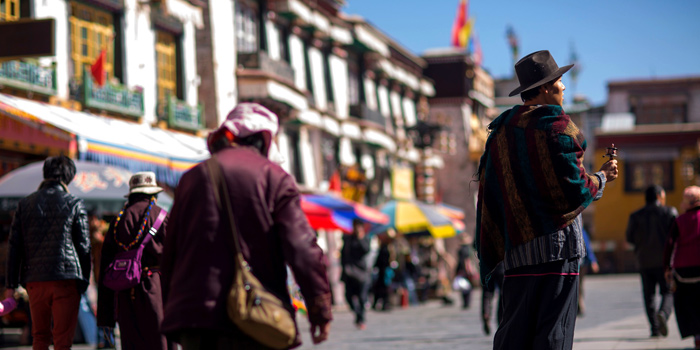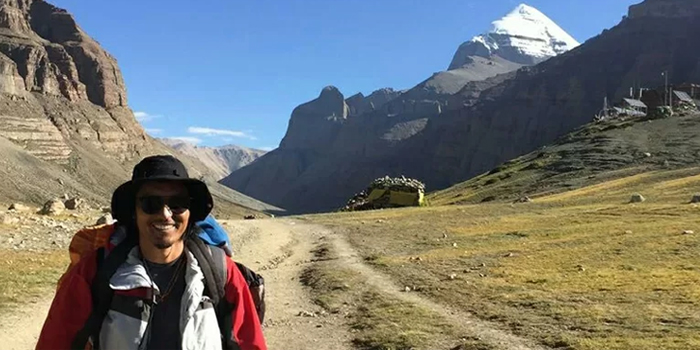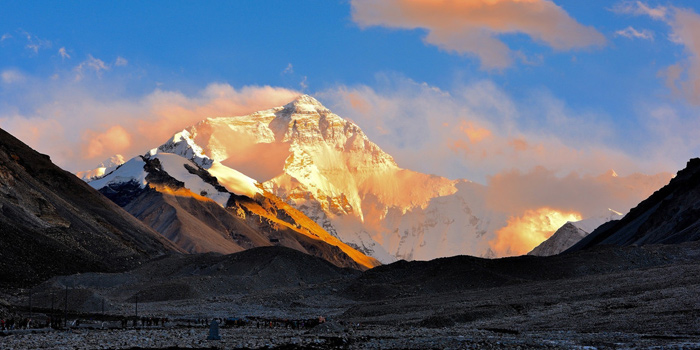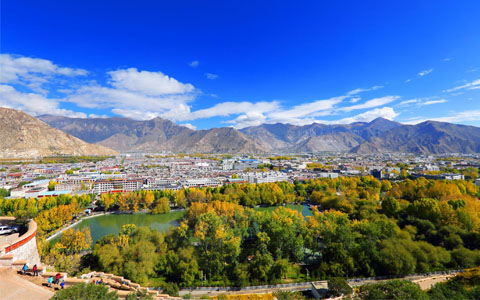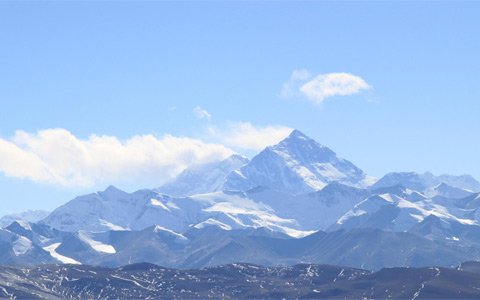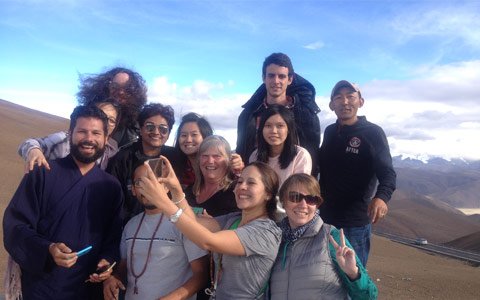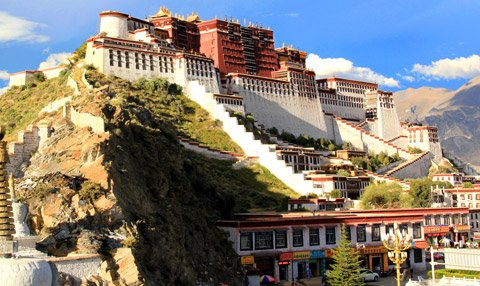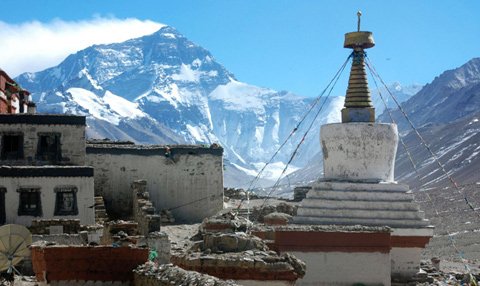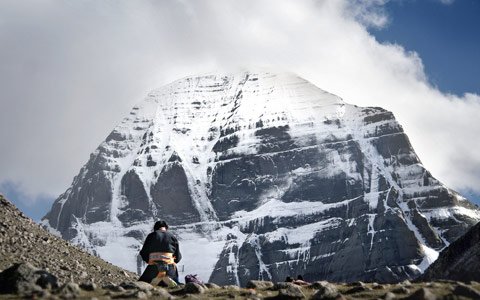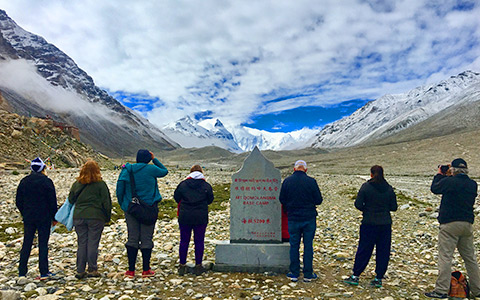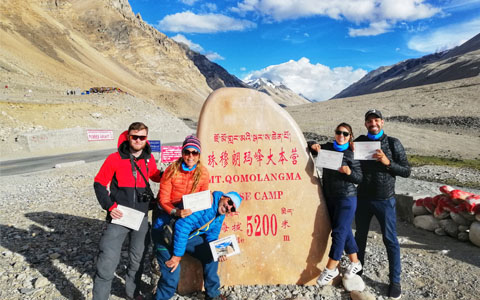Top Festivals in Tibet: The First 4 are Most Worth Experiencing during Your Tibet Tour
Tibet is home to both a unique environment and unique culture. This is a place that will transport you to another world where echoes of the past live on in the traditions of the present. The local culture is shaped by the remote and harsh environment as well as Tibetan Buddhism. These influences can be seen in the traditions of Tibetan festivals, some of the most colorful social and cultural events in Tibet, and one of the best ways to experience local culture.
 1. Tibetan New Year - The Most Important Festival in Tibet
1. Tibetan New Year - The Most Important Festival in Tibet
 2. Saga Dawa Festival - Honoring the Life and Enlightenment of Buddha
2. Saga Dawa Festival - Honoring the Life and Enlightenment of Buddha
 3. Shoton Festival - Celebrating the Liveliest Festival in Summer Tibet
3. Shoton Festival - Celebrating the Liveliest Festival in Summer Tibet
 4. Butter Lamp Festival - Illuminating the Legacy of Tsongkhapa
4. Butter Lamp Festival - Illuminating the Legacy of Tsongkhapa
 5. Tashilhunpo Thangka Festival - The Best Religious Festival to Witness in Shigatse
5. Tashilhunpo Thangka Festival - The Best Religious Festival to Witness in Shigatse
 6. Nagqu Horse Racing Festival - A Thrilling Display of Nomadic Skill and Spirit
6. Nagqu Horse Racing Festival - A Thrilling Display of Nomadic Skill and Spirit
 7. Nyingchi Peach Blossom Festival - Embracing the Natural Beauty of Spring
7. Nyingchi Peach Blossom Festival - Embracing the Natural Beauty of Spring
 8. Ongkor Festival - Expressing Gratitude for a Bountiful Harvest
8. Ongkor Festival - Expressing Gratitude for a Bountiful Harvest
 9. Bathing Festival - Purification and Renewal in the Holy Waters
9. Bathing Festival - Purification and Renewal in the Holy Waters
1. Tibetan New Year - The Most Important Festival in Tibet
Tibetan New Year, known as Losar, is a festival of major cultural, spiritual, and social significance for the Tibetan people. As the most important and widely celebrated annual celebration, it is marked by prayers, rituals, and cultural events around the region.
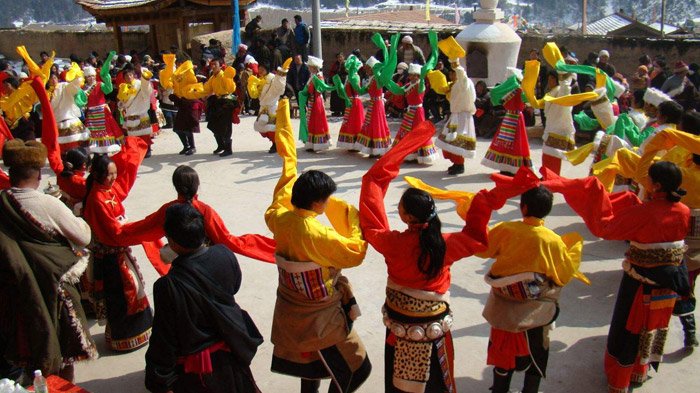 Tibetan New Year (Losar)
Tibetan New Year (Losar)
Although Losar is deeply associated with Tibet Buddhism, it actually predates the arrival of Buddhism to Tibet. During Losar, people celebrate by some ancient ceremonies usually revolving around the good versus evil struggle theme. Traditionally, Tibetan New Year is celebrated 15 days but the main celebrations are in the first 3 days of the festival.
At that time, monasteries and homes are illuminated with butter lamps and traditional decorations, and people dress in their finest traditional clothes, visiting family and friends, and engaging in worship at local monasteries. On the eve of Losar, Tibetans gather for a festive meal including special foods such as khapsay, deep-fried dough, khabsey, sweet biscuits, and guthuk, a noodle soup.
Next Festival Date: Tibetan New Year will take place from Saturday, February 10, 2024, to Monday, February 12th, 2024.
2. Saga Dawa Festival - Honoring the Life and Enlightenment of Buddha
Saga Dawa Festival is held to honor the life and enlightenment of Siddhartha Gautama, the historical Buddha. Held on the 15th day of the fourth month of Tibetan Calendar which corresponds to the full moon, it is celebrated with devotion, religious activities, and acts of generosity.
 Mount Kailash Saga Dawa Festival
Mount Kailash Saga Dawa Festival
The accumulation of merit through acts of kindness, generosity, and compassion is a major emphasis of the festival. Tibetan people will engage in acts of charity, and make donations to monasteries in honor of the life of Buddha. It is also a time when many people embark on pilgrimages such as walking a kora route around Mount Kailash and other sacred sites in Tibet.
Next Festival Date: Saga Dawa Festival will fall on May 23rd, 2024.
3. Shoton Festival - Celebrating the Liveliest Festival in Summer Tibet
While many Tibetan festivals are marked by prayer and spiritual devotion, the Shoton Festival is a lively event celebrated with enthusiasm and joy. Known as the Yogurt Festival, Shoton literally translates to yogurt banquet. During the festival, locals and visitors enjoy yogurt and other dairy products, picnicking in scenic locations such as Norbulingka Park.
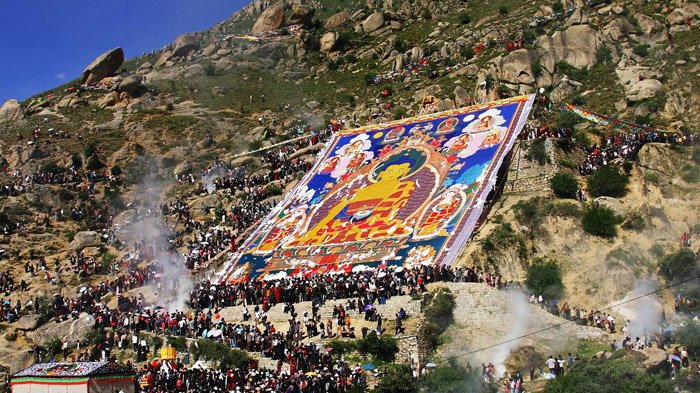 Shoton Festival
Shoton Festival
A highlight of the festival takes place at Drepung Monastery in Lhasa with the unveiling of giant Thangka, large painted or embroidered scrolls depicting a Buddhist deity or scene. All over Tibet, monks participate in religious processions, carrying images of deities and Buddhist scriptures through the streets while chanting prayers, and local delicacies and snacks are often available in abundance for onlookers.
Shoton Festival today is a great occasion for Tibetans as well as tourists. Attending the festival gives a special feeling of Tibet to the tourists. The festival timing is also in the peak tourism season for Tibet and many tourists will be in the area around August.
Next Festival Date: The next Shoton Festival will take place on August 4th, 2024.
4. Butter Lamp Festival - Illuminating the Legacy of Tsongkhapa
A butter lamp is a traditional Tibetan Buddhist offering made of a cotton wick immersed in a container of butter. When the wick is lit, the butter burns, creating a gentle flame that emits a soft, warm light, symbolizing dispelling darkness with the light wisdom.
The Butter Lamp Festival is marked by the illumination of butter lamps to commemorate the life and legacy of Je Tsongkhapa, the founder of the Gelug school of Tibetan Buddhism. Thousands of butter lamps are lit in monasteries, temples, and households all around Tibet. In addition to prayers and introspection, Cham Dances, known as sacred mask dances, are held in different places depicting aspects of Buddhist teachings and stories.
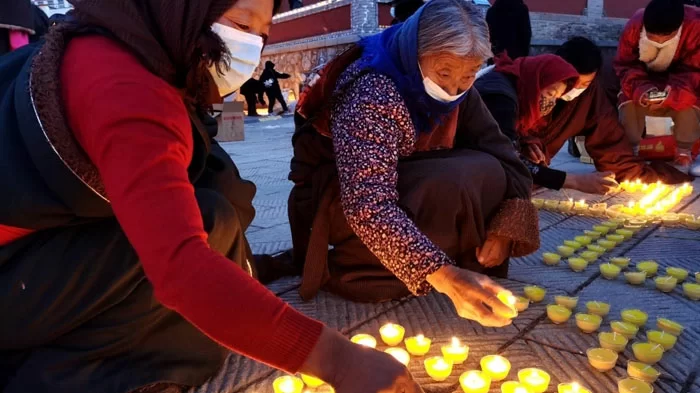 Tibetan Butter Lamp Festival
Tibetan Butter Lamp Festival
Butter Lamp Festival is a very interesting sight. It can be best experienced in Barkhor Street in Lhasa. Barkhor Street is a very ancient round street surrounding the Jokhang Temple. For visitors, Barkhor Street is already a magical place showing the original outlook of Lhasa but it becomes more colourful during this festival.
Next Festival Date: The next Butter Lamp Festival will take place early in the year on February 24th, 2024.
5. Tashilhunpo Thangka Festival - The Best Religious Festival to Witness in Shigatse
Celebrated at the Tashilhunpo Monastery in Shigatse, the seat of the Panchen Lama, the Tashilhunpo Thangka Festival is centered around the unveiling of a large and intricate thangka painting.
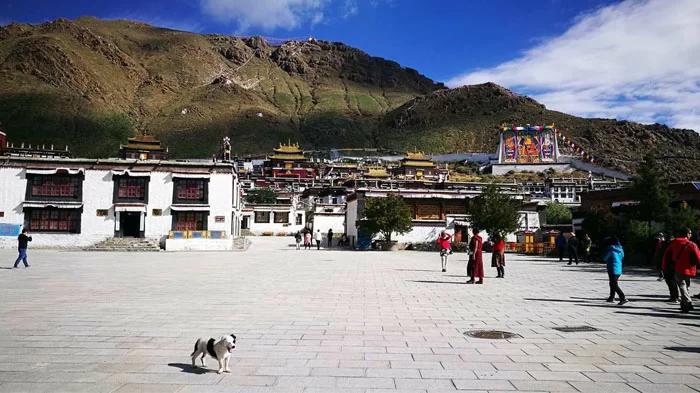 Tibet Tashilhunpo Thangka Festival
Tibet Tashilhunpo Thangka Festival
Thangkas are sacred scroll paintings that depict various deities, scenes from Buddhist scriptures, or symbolic representations of teachings. Considered a sacred event holding deep spiritual significance for both monks and laypeople, it is believed that viewing the thangka is a way to accumulate merit and blessings.
Taking place around the 14th or 15th day of the 5th lunar month, the festival is held in June or July in the Gregorian calendar. Monks carry the thangka in a procession, its size and detail making it a remarkable sight. Pilgrims and visitors alike take part in the rituals and make offerings as a way to connect with the spiritual essence of the event.
Next Festival Date: The 2024 Tashilhunpo Thangka Festival will take place on June 20th.
6. Nagqu Horse Racing Festival - A Thrilling Display of Nomadic Skill and Spirit
A grand festival focused on excitement, the Nagqu Horse Racing Festival is a showcase of the rich nomadic culture of Tibet. Held in Nagqu Prefecture, located in northern Tibet, the festival is a celebration of traditional sports, horse racing, and cultural performances.
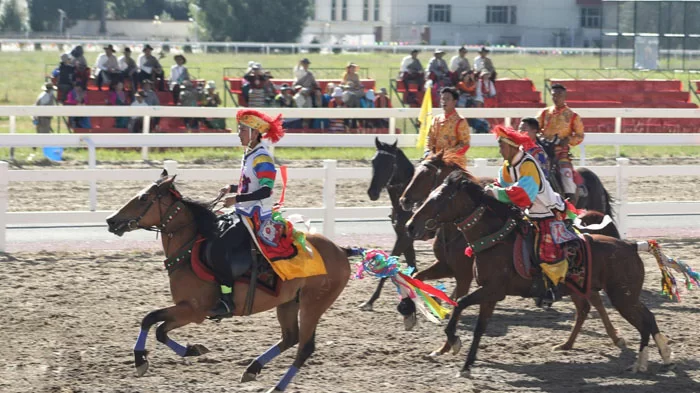 Tibet Nagqu Horse Racing Festival
Tibet Nagqu Horse Racing Festival
The horse racing events are the highlight of the festival. Horse riders from nomadic communities complete to display their riding skills in races and equestrian events that show off the traditions that have arisen from local nomadic culture. That culture is on full display throughout the festival with traditional dances, songs, and sports such as archery and wrestling taking place in front of a backdrop of yurt tents full of handcrafted goods.
Next Festival Date: The next Nagqu Horse Racing Festival will be held on August 10th, 2024.
7. Nyingchi Peach Blossom Festival - Embracing the Natural Beauty of Spring
Held during the spring months when the peach trees in the region burst into full bloom, the Nyingchi Peach Blossom Festival is a joyful celebration of nature's beauty. With the arrival of Spring, the landscape of Nyingchi transforms into a stunning tapestry of pink and white peach blossoms. Against this scenery, the festival offers visitors the opportunity to watch cultural performances and sample local dishes and snacks.
Next Festival Date: Nyingchi Peach Blossom Festival will be observed in late March, 2024.
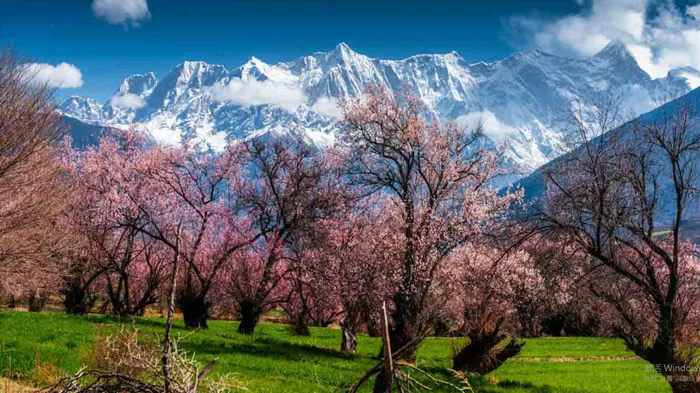 Tibet Nyingchi Peach Blossom Festival
Tibet Nyingchi Peach Blossom Festival
8. Ongkor Festival - Expressing Gratitude for a Bountiful Harvest
Ongkor is a harvest festival held as a celebration of gratitude for a successful harvest. Deeply connected to the agricultural heritage of Tibet, it is a time for rejoicing after the hard work of harvesting the annual crops.
During the festival, farmers engage in prayers and rituals to express their gratitude to the land and make offerings of food, butter lamps, and other symbolic items to seek blessings for the next year. It is a time for community bonding, cultural performances, and enjoying food prepared from the fresh harvest.
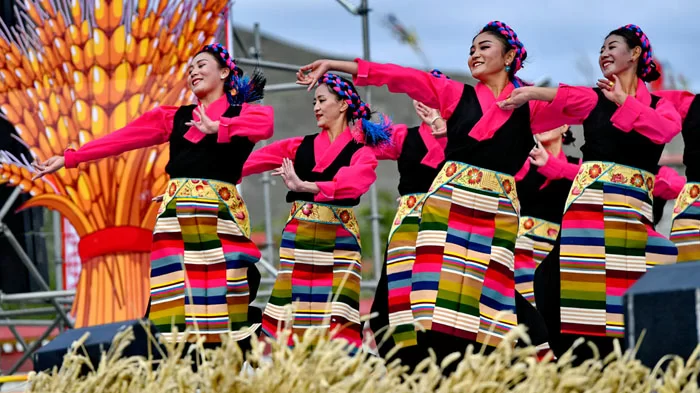 Tibetan Ongkor Festival
Tibetan Ongkor Festival
9. Bathing Festival - Purification and Renewal in the Holy Waters
Karma Dunba, known as the Bathing Festival, is a day of prayer and purification. It is believed that the act of bathing in natural water sources, such as rivers, lakes, and streams, will invite blessings and positive energy through the cleansing of physical and spiritual impurities. The purification process is accompanied by the reciting of prayers and mantras and joined with the performance of traditional Tibetan music and dances.
 Tibetan Bathing Festival.
Tibetan Bathing Festival.
10. Tibetan Fairy Day - "Women's Festival" in Modern Tibet
The Fairy Festival, held to honor a female deity called Palden Lhamo, has become known as Women's Festival in modern Tibet. Palden Lhamo is a fierce and protective deity in Tibetan Buddhism often depicted riding a mule and holding a skull cap, symbolizing her ferocity and protection.
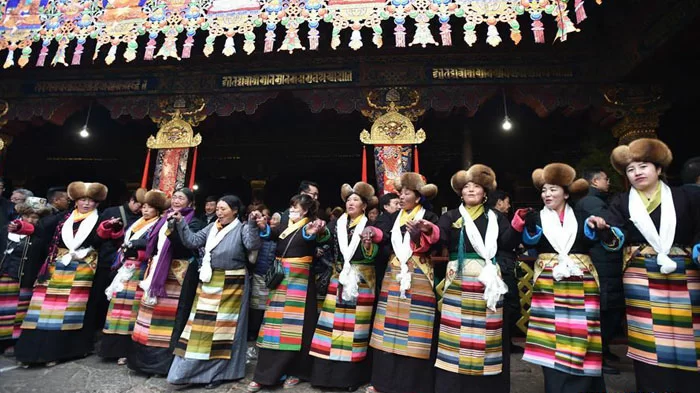 Tibetan Fairy Day Festival
Tibetan Fairy Day Festival
On this day, girls and women dress up to make pilgrimages and treat themselves with good food and shopping. It is the custom that women can ask for money from any man they meet that day as a donation to the fairies. Men are expected to be very generous so as to receive good luck for the coming year. Primarily celebrated in Lhasa, many women celebrating the festival can be seen on Barkhor Street, praying and making offerings.
Conclusion
Tibetan festivals are a great time for visitors to immerse themselves in the unique culture of Tibet. If your visit happens to coincide with an important festival, you will be guaranteed colorful days, a joyful environment, and a unique experience. Contact us or check out our well-designed Tibet tours to join us, and we will provide you with the best possible festival experience in Tibet.

Kham Sang is responsible and honest with more than six years of guide experience in Tibet.She has strong interpersonal skills and can communicate effectively with tourists.
Related Articles & Posts
Most Popular Tibet Tour Packages
-
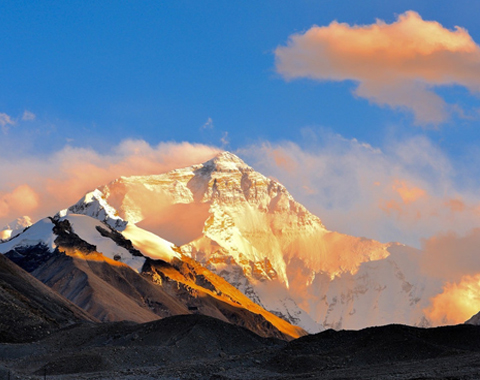
Lhasa - Gyantse - Shigatse - Everest Base Camp - Shigatse - Lhasa
USD939
View Details -
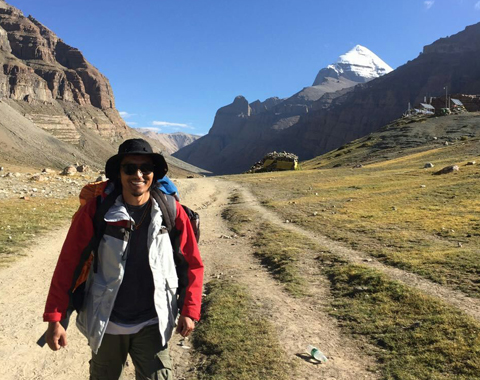
Lhasa - Gyantse - Shigatse - E.B.C - Saga - Kailash Trek - Darchen - Lake Manasarovar - Saga - Gyirong - Tingri - Lhasa
USD2059
View Details -
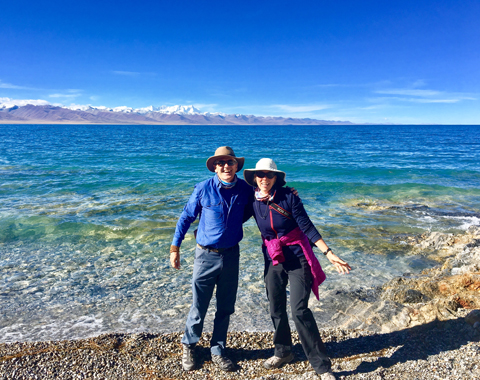
10 Days Lhasa to Everest Base Camp and Namtso Lake Small Group Tour
Lhasa - Gyantse - Shigatse - EBC - Shigatse - Lhasa - Namtso Lake - Damxung - Lhasa
USD1289
View Details -
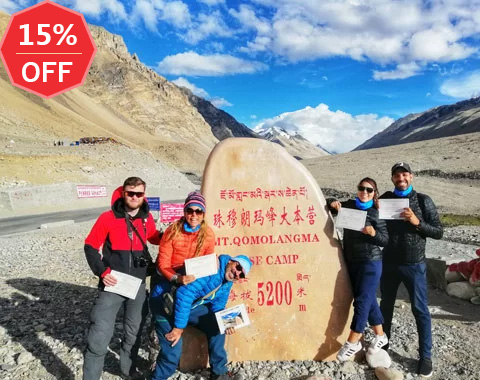
8 Days Driving Across Himalaya Overland Adventure from Kathmandu to Lhasa
Kathmandu - Gyirong - Everest Base Camp - Tingri - Shigatse - Gyantse - Lhasa
USD1069
View Details -
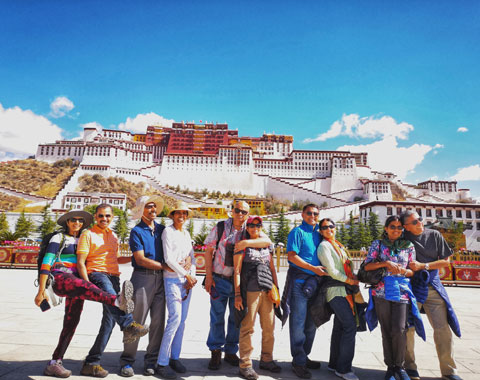
4 Days Lhasa Impression Small Group Tour: Explore the Heart of Tibet and Mingle with the Locals
Lhasa
USD509
View Details -
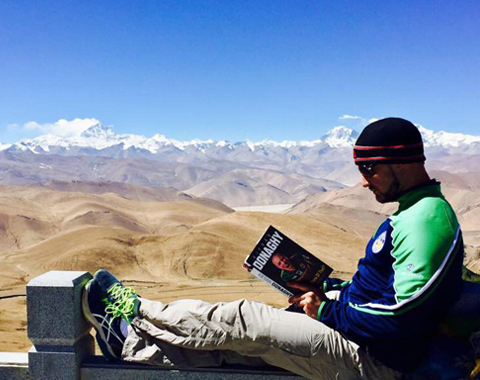
Lhasa - Gyantse - Shigatse - Everest Base Camp - Gyirong - Kathmandu
USD979
View Details -
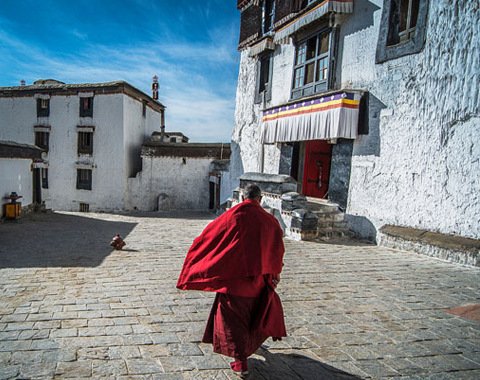
Lhasa - Gyantse - Shigatse- Lhasa
USD799
View Details -
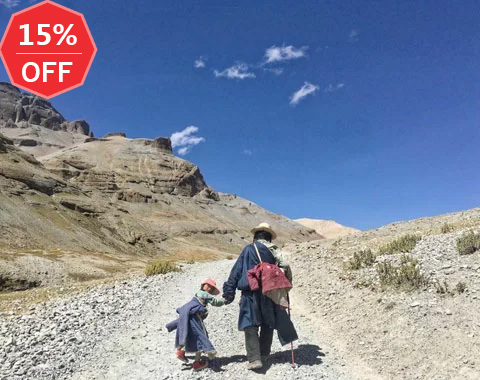
13 Day Lhasa, Mt. Everest, Mt. Kailash, Lake Manasarovar and Kathmandu Adventure Tour
Lhasa - Gyantse - Shigatse - EBC - Saga - Darchen - Kailash Trek - Darchen - Saga - Gyirong - Kathmandu
USD2059
View Details
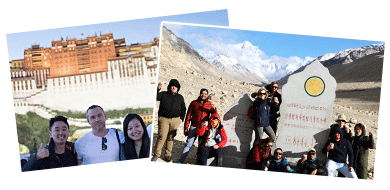

.jpg)



